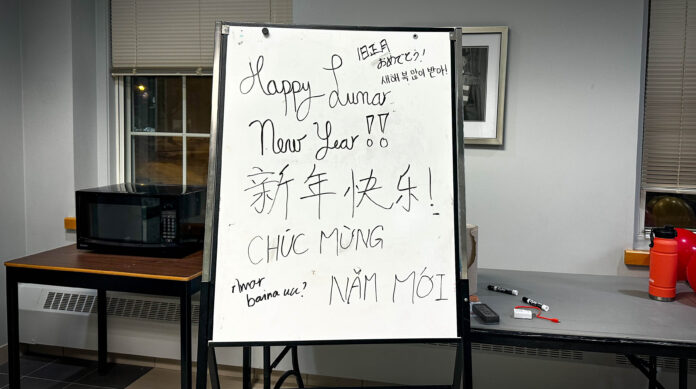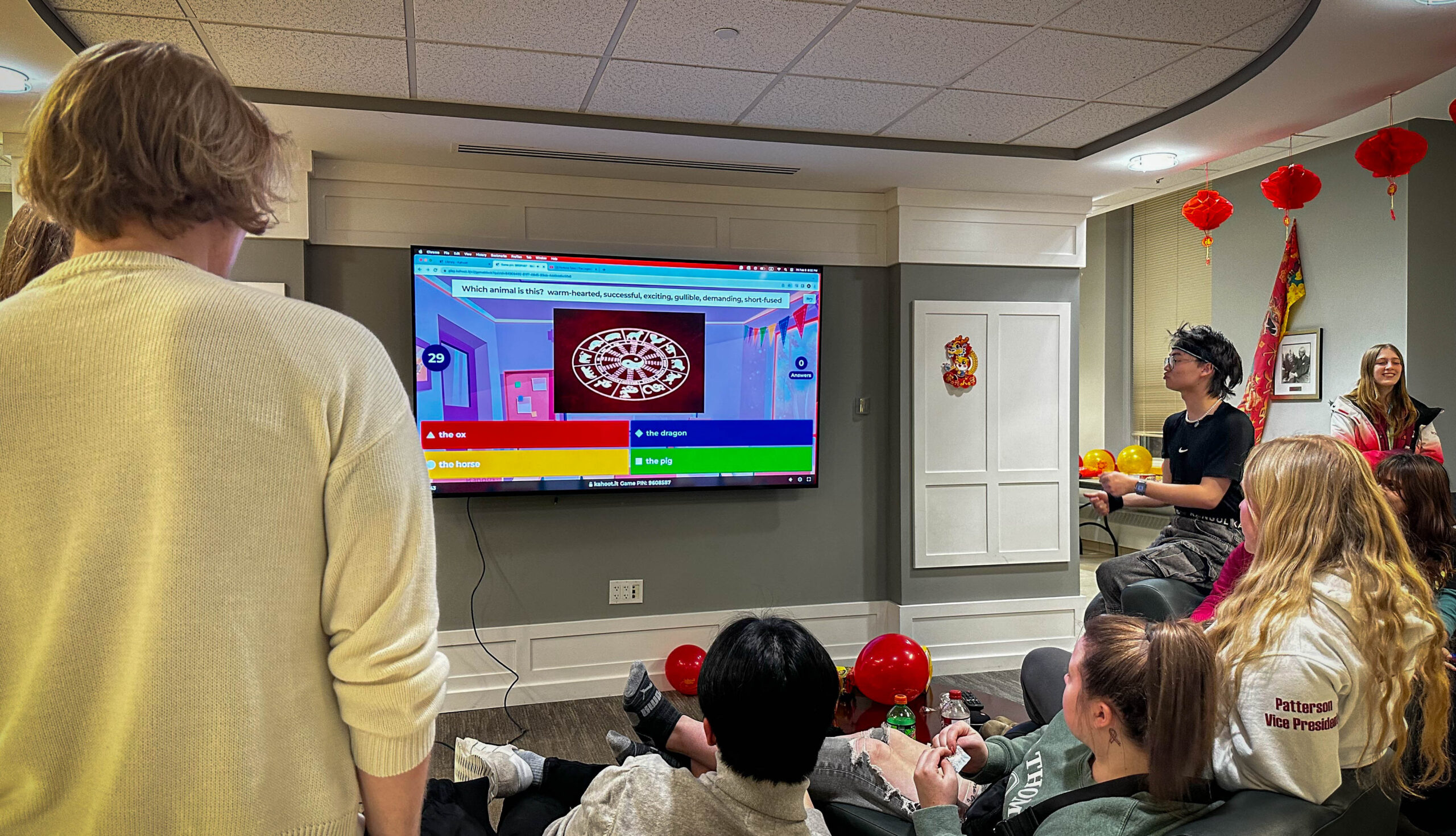
St. Thomas University’s International Student Association (STUISA) celebrated the Lunar New Year on Feb. 9 in James Dunn Hall. This Lunar New Year was on Feb. 10, in celebration of the year of the wood dragon.
STUISA organized an event to celebrate the holiday with competitive and educational games, food and opportunities for Asian students to connect with their culture while being far from home.
“Asia is the biggest continent in the world, right?” said Ameri Suzuki, STUISA’s Asian Ambassador and organizer of the Lunar New Year celebrations. “At first I was scared as to how are we going to celebrate all the cultures that Asian students celebrate. But then getting to know them, getting to know their culture, that I realized is really important.”
The Lunar New Year begins with the first new moon and ends on the first full moon of the lunar calendar, 15 days later. This is a major festival celebrated in several East Asian countries to receive the new year.
The origins of the Lunar New Year festival are thousands of years old and are based on legends. Students learned about the meaning of the different creatures in the Chinese zodiac during the celebration and played games that taught them about the different customs from the various countries that celebrate the holiday.
“There’s so many different ways of celebrating it as well,” she said. “Decoration-wise [the event] was Chinese, but then the music that we decided to play was Korean. And the food was a mixture of Vietnamese, Cantonese, Chinese and Korean.”
Helping students connect with their cultures at the university is a learning experience for those who make it happen too. As an international student from Japan, Suzuki said it was enriching to learn about how different countries celebrate the Lunar New Year.
“I don’t come from a culture that celebrates it, so hearing their voices and recognizing their presence or asking them what they’d like to see has been really helping me better hold events,” she said. “I wanted to make sure that it was inclusive.”
This is Suzuki’s first year as the Asian Ambassador after running unopposed for the position at the end of last school year. Now, she said because of the increase in Asian students, she is more confident hosting celebrations like Lunar New Year and Diwali, which happened in the fall term.

“Last year, there was a lot fewer international students from Asia,” she said. “This year, I see a lot more students, especially from India and South Korea. That’s been amazing, it couldn’t be greater. I am honoured to be part of [STUISA],” she said.
The Lunar New Year celebrations extended farther from JDH to the Meal Hall, where lunch featured East Asian cuisine. Suzuki planned both the Lunar New Year celebration and the lunch menu for that day. She worked together with Saa Andrew Gbongbor, STU’s cultural diversity coordinator to bring cultural dishes for everyone.
Suzuki asked students for recipes from their countries and had to do a lot of research on a diverse number of recipes. Dishes included Korean chap jae noodles, shrimp dumplings, vegetable fried rice, Hainanese chicken and more.
Events like the Lunar New Year celebration are attended by the students who find it enjoyable to spend time with their friends in celebration of something meaningful for them and their families back home.
International students are often grouped as one section of the university’s student body, when in reality many come from a diverse range of places that have different celebrations within them.
Suzuki said STUISA is trying their best to plan a variety of events for international students to feel at home, while also including domestic students to try to build a bridge between these communities that are usually viewed apart — such as the Global Connections Challenge that happened in the fall.
Related: The divide between international and domestic students
This promotes a space for the appreciation and connection of students with their different cultures to bring pieces of home to Canada.
This was the case for Thanaisri Ellamaran, an international student from Malaysia who also won first prize in the Lunar New Year Kahoot game. Her prize included seaweed snacks and shrimp crackers.
“I think getting to be competitive with your friends, but also having fun at the same time, and of course snacks are always great,” she said.
For Ellamaran, who doesn’t typically celebrate the holiday herself, the event was great for learning and exchanging culture.
“I like having that space there where it’s like, you can come in, know about the culture and share that experience, have good food and all that. And I think a lot of people found it really educational, so I think that’s really cool.”
